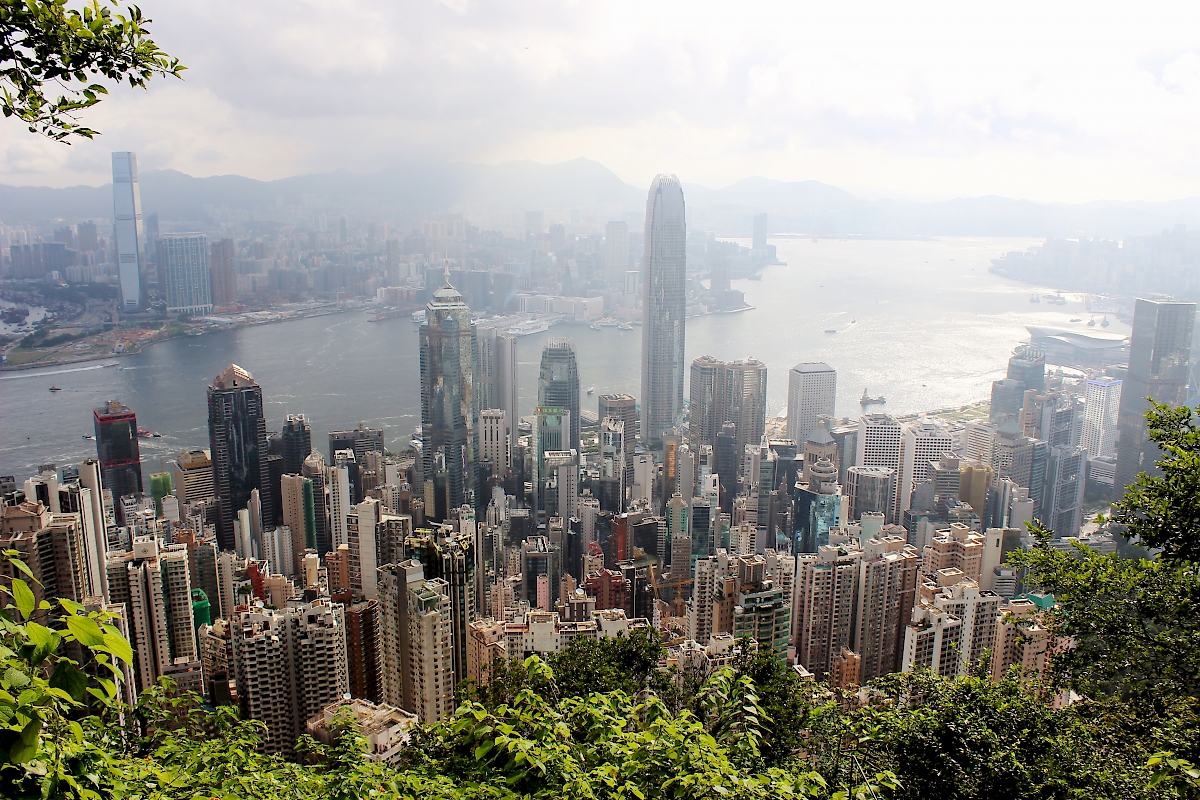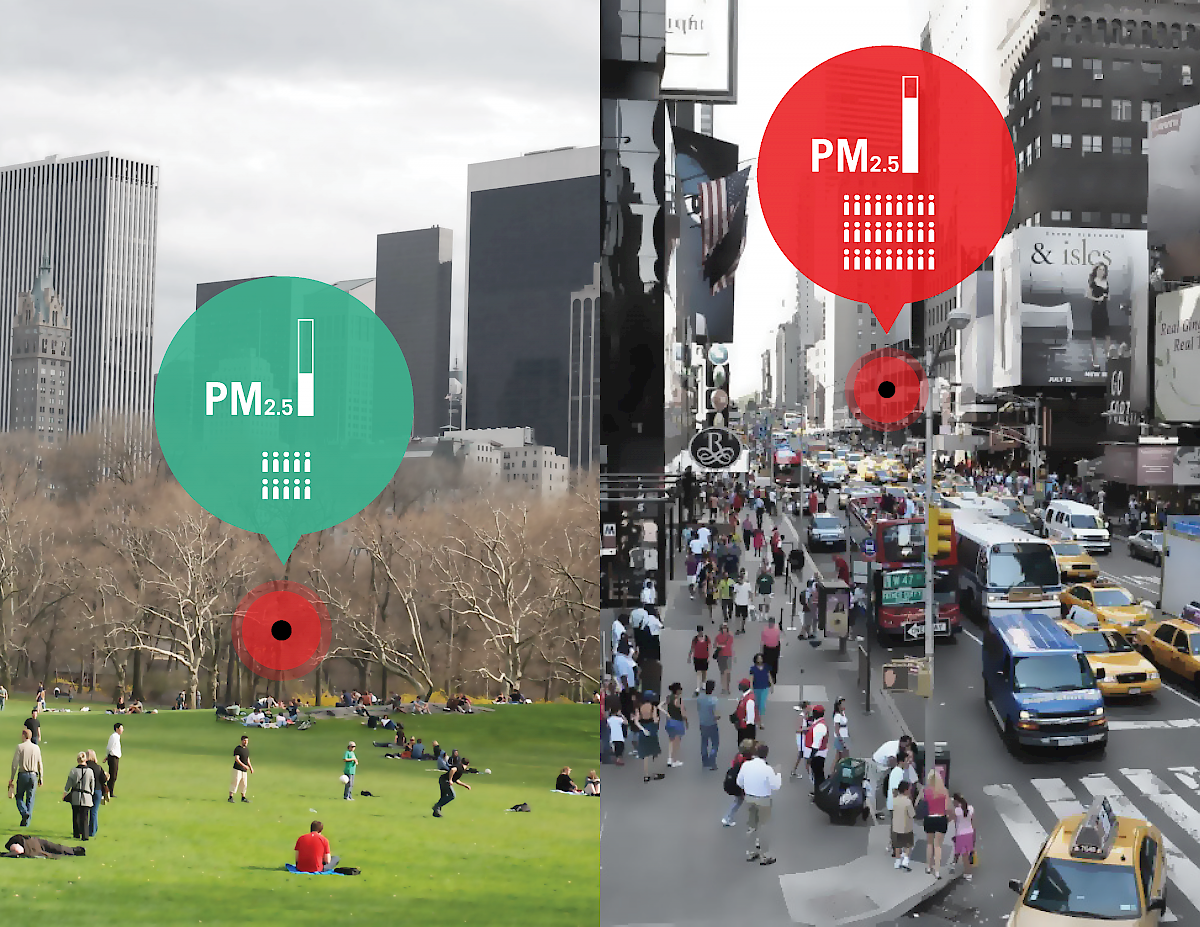Global urbanization is occurring at an unprecedented scale. This brings many environmental issues, not least increasing levels of air pollution in cities. However, air pollution is really just a proxy for the key issue here: population exposure to pollution and the public health effects associated with this. In terms of tackling exposure to air pollution emissions, policies should aim to keep people away from the most polluted areas rather than focusing exclusively on containing the root of the pollution itself.

Air pollution is the world's largest single environmental health risk, as recognised by the World Health Organisation (WHO) and a significant number of epidemiological studies which have reported the adverse impacts of air pollution exposure on human health in recent years. The WHO estimates that outdoor air pollution exposure leads to approximately 3.7 million premature deaths annually worldwide, with South-East Asia and the Western Pacific Regions carrying the largest air pollution-related health burden. In order to tackle global air quality, the WHO recently passed a landmark resolution focusing on it's technical capacity to support Member States in taking action on air pollution, building their capacity to implement the WHO air quality guidelines and advance research into air pollution's health effects.
While the WHO sets guidelines for air pollution parameter levels, municipalities generally set legislation with parameter levels in excess of these. Along with this, there are other problems related to the regulation and monitoring of air quality especially in urban areas. Air quality in cities is typically benchmarked using sparsely located but highly accurate instruments. These are important for measuring general levels of air quality in cities, but the low resolution of the information output from these, in time and space, can limit their usefulness for identifying specific sources of pollution emissions, and accurately identifying exposed populations. These monitors are also very costly to set up and maintain.
As a result of these limitations, pervasive or ubiquitous air quality sensing i.e. using a large number of small sensors in urban areas has gained traction in recent times, as sensors are becoming miniaturised, less expensive and more reliable. Measurements can be collected using fixed and mobile monitoring nodes, and citizens have the potential to be involved in this process, through participatory sensing approaches. The Singapore Airscapes Project by the SENSEable City Lab used a distributed network of moving sensors to monitor air quality. The data collected was logged at short intervals on the order of seconds and displayed live on a website. In advancing this type of air quality mapping, in cities such as Hong Kong where many people live and work in high-rise buildings, more appropriate three dimensional mapping of air quality will be investigated by placing air quality monitoring nodes at various heights on buildings.
Real-time Environmental Data for Citizens
Even though it is important to manage background and street-side air pollution levels in urban areas in the long-term, cities have reached a point where we are being forced to mitigate around air pollution sources and receptors. Background air pollution is really a proxy for the key issue here: population exposure to pollution and the public health effects associated with this. In terms of tackling exposure to air pollution emissions, policies should aim to keep people away from the most polluted areas. In the end, this may be the only means to satisfy the criteria of reducing exposure to air pollution levels in excess of the WHO guidelines.
Currently, this is not how air quality is regulated or how environmental policy is implemented. Hence, perhaps regulation efforts should progress to take this into consideration, and put more focus on targeting strategies in locations where people are evidently located, based on quantified real-time information. In designing air pollution intervention strategies, a combination of reducing air pollution in specific areas and reducing the number of people exposed to pollution at that location and time can offer a more optimal and efficient solution than just reducing overall air pollution levels.

Mapping Urban Paths and Pollution
Tremendous volumes of data are being generated within cities nowadays and this will only increase in the future. In terms of identifying where people are located, urban citizens are leaving digital geo-referenced traces almost everywhere in their daily lives. Phone and wireless device connections to respective service providers have geographical tags linked to them, as do tap-in tap-out public transport use and credit card transactions. This information can be gathered and analysed to construct the paths of people in an individual or population context.
This type of urban computing research is a vast and quickly progressing area. In overlaying this information with detailed and perhaps real-time air quality maps, it is possible to target strategies at specific areas where people are most likely to be exposed to air pollution. Although there are privacy concerns associated with the sensitive data being used, it is reassuring to learn that this type of information may inadvertently inform public health research and policy.
Air pollution related to traffic emissions poses an especially significant problem in cities. Urban traffic and transportation are increasingly logging digital GPS traces which can be captured in real-time. These live traffic trajectories can be used to produce highly localised emissions estimates. It is therefore possible for cities to implement real-time adaptive or responsive strategies to mitigate transportation emissions and subsequent human exposure.
Pollution Stats on-the-go
Urban dashboards are an attractive means of broadcasting live air quality information to urbanites on the go. Benchmarking the environment in real-time gives people tangible up to the minute evidence that air pollution is or is not an issue in their direct vicinity, so people have the ability to modify their own behaviour or movement to minimise their exposure to air pollution.
Distributed networks of environmental sensors hold promise in the future in terms of at least gathering useful detailed information for the public to instantly receive. Researchers are rapidly prototyping and testing these, and it is envisioned that city municipalities will invest heavily in due course.
Economies of the future must address human exposure to air pollution. The United States Environmental Protection Agency estimates that the costs for the implementation of the 1990 Clean Air Act to be about 65 million dollars, but the potential benefits reach 2 trillion dollars from 1990 to 2020; in 2010 approximately 230,000 premature deaths were avoided. Those are startling figures, and the estimates are comparable for the European Union's Clean Air for Europe (CAFE) directive, where it is estimated that the net health and economic benefits due to its implementation could be worth approximately 4.6 billion euro per annum by 2030.
The onus is on individual states and cities to reduce population exposure to air pollution by designing air pollution intervention strategies for the protection of human health. Air quality management and mitigation will likely embrace new technologies and the vast quantities of data being generated by cities, therefore reducing the health and economic costs associated with human exposure to air pollution in the future. Before this may happen, the metric of how urban air quality in cities is regulated must be altered. This, along with improved policies incorporating new and novel methods, will reduce the number of people being exposed to levels of air pollution well above the WHO recommended limits.








